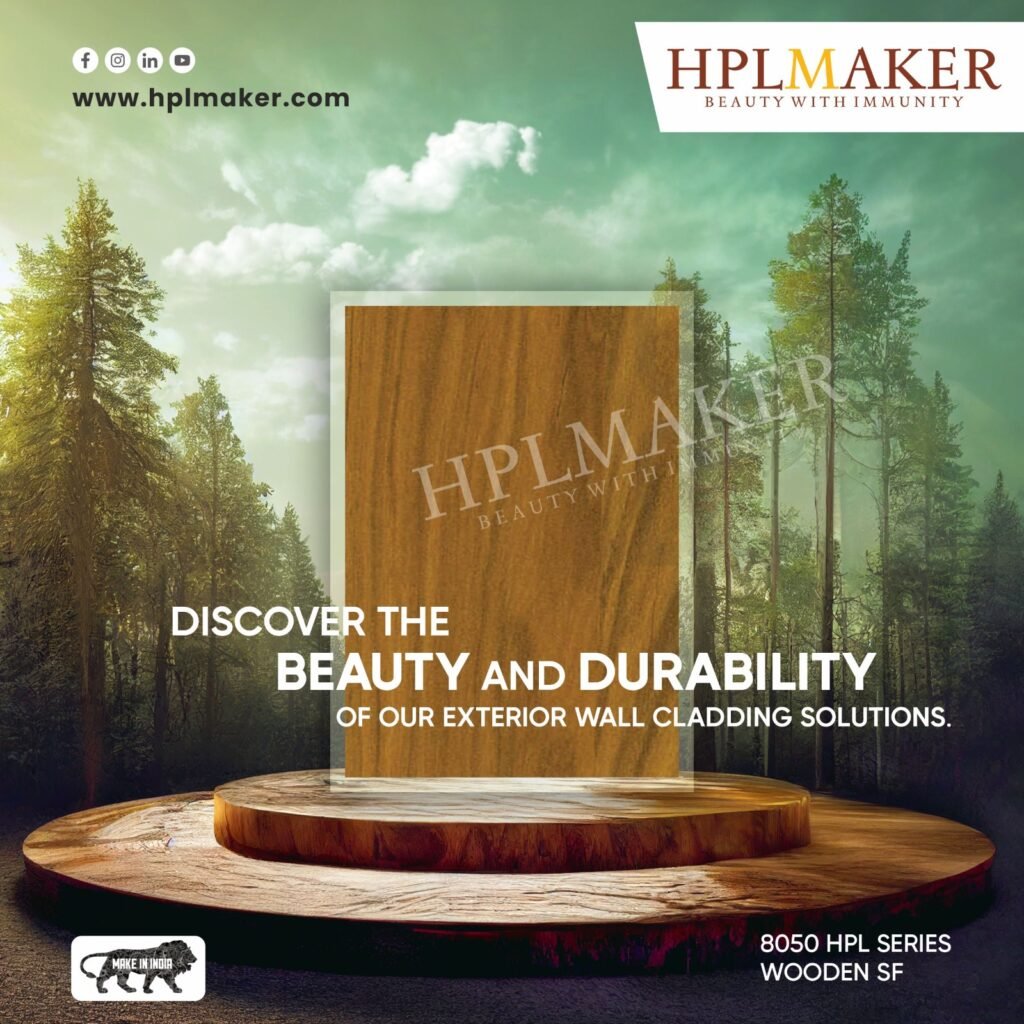Table of Contents
ToggleHPL Sheet Full Form-High Pressure Laminate Sheets
HPL – High Pressure Laminate Sheets
A close look at HPL and its applications and features!
The full form of HPL is High Pressure Laminate Sheets. HPL sheet is a common term for High Pressure Laminate Sheet.
If we put it in simpler words – HPL sheets are the improved version of plastic laminates. It is currently regarded as one of the most aesthetically pleasing and long-lasting building materials available because of numerous characteristics added to its design.
Because HPL (High-Pressure Laminate) sheets are strong, aesthetically pleasing, and resistant to a variety of environmental conditions, it can be used extensively in both interior and exterior applications in both commercial and residential properties. A large number of residential and commercial properties owners have switched to HPL and are happy about their decision.
HPL sheets are made up by combining 48 layers of virgin kraft papers with 2 layers of decorative papers on top and bottom. The craft papers dipped in phenol resin regulate the product thickness while the decorative papers dipped in melamine add visual appeal through design and color.
HPL can be employed in various settings because of its varied qualities. Here is a thorough rundown of their applications:
Placement of HPL Sheets:
Exterior Applications -
- Facade Cladding:
HPL sheets are commonly used as external cladding for buildings due to their weather resistance and durability. They shield against environmental factors like rain, sun, and pollution, protecting the underlying building structure.
- Soffits and Fascia:
HPL sheets can be used to cover soffits (underside of roof overhangs) and fascia (vertical finishing edge of a roof) as they enhance the aesthetic appeal of the building’s exterior and protect underlying structures from weathering.
- Balcony Panels:
HPL sheets are used to clad balcony railings and privacy screens as they give inhabitants privacy and moisture protection in addition to offering a stylish finish.
- Exterior Wall Panels:
HPL panels can be used as decorative elements on exterior walls. They provide a durable and low-maintenance alternative to traditional exterior cladding materials like wood or metal.

Placement of HPL Sheets:
Interior Applications -
- Interior Wall Cladding:
HPL sheets are extensively used to cover interior walls. They offer a wide range of colors and textures, are easy to clean, and provide durability against wear and tear.
- Furniture and Cabinetry:
HPL is used for making furniture surfaces, cabinet doors, and countertops. It is scratch-resistant, easy to clean, and comes in various designs, making it suitable for both residential and commercial spaces.
- Partitions and Room Dividers:
HPL sheets are used to create partitions and dividers within interior spaces. They provide privacy, sound insulation, and aesthetic enhancement to office spaces, commercial interiors, and homes.
- Ceiling Panels:
HPL sheets are applied to ceilings for decorative and functional purposes. They can hide imperfections, provide acoustic insulation, and are easy to maintain.
- Doors:
HPL sheets are used for door surfaces, both interior and exterior. They offer durability, and scratch resistance, and can withstand frequent use and environmental exposure.
Why to choose HPL Sheets:
Qualities of HPL sheets -
Weather Resistance: HPL sheets can withstand a lot of weather, including temperature changes, UV rays, and rain. This gives them strength and the ability to look good outside for extended periods.
Low upkeep: Compared to more conventional exterior materials like paint or wood, they require less maintenance. HPL sheets usually don’t need to be painted or sealed, and they are quite easy to clean.
Durability: High temperatures and pressures are used during the manufacturing process to create dense, robust HPL sheets. Their ability to withstand fading, damage, and scratches is essential to preserving the building facade’s visual appeal.
Design Flexibility: HPL sheets are available in an extensive array of hues, patterns, and textures. Because of its adaptability, architects, and designers may create a variety of aesthetically pleasing designs while maintaining the performance and durability needed for outdoor applications.
Fire Resistance: The majority of HPL sheets offer strong fire resistance, which is crucial for outdoor applications where fire safety laws must be followed.
Ease of installation: Installing HPL sheets is simple and requires only common carpentry tools and methods because they are quite light. They are therefore practical for both brand-new building and remodeling projects.
Environment friendly: Sustainable materials and manufacturing processes are used in the production of several HPL sheets. In comparison to certain other external cladding materials, they are a more environmentally responsible option because they can be recycled after their useful life comes to an end.


